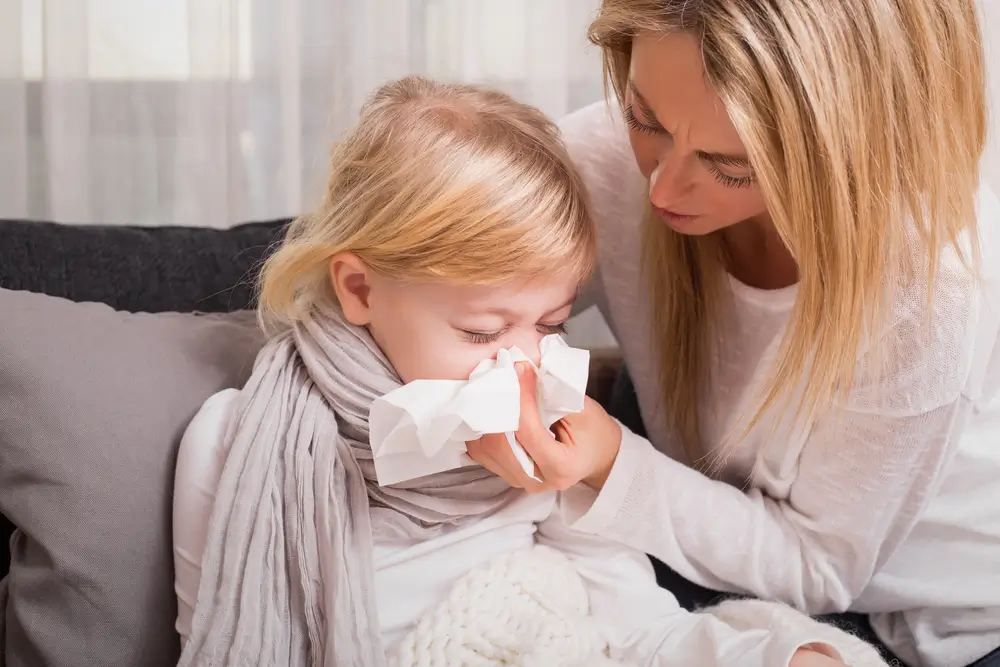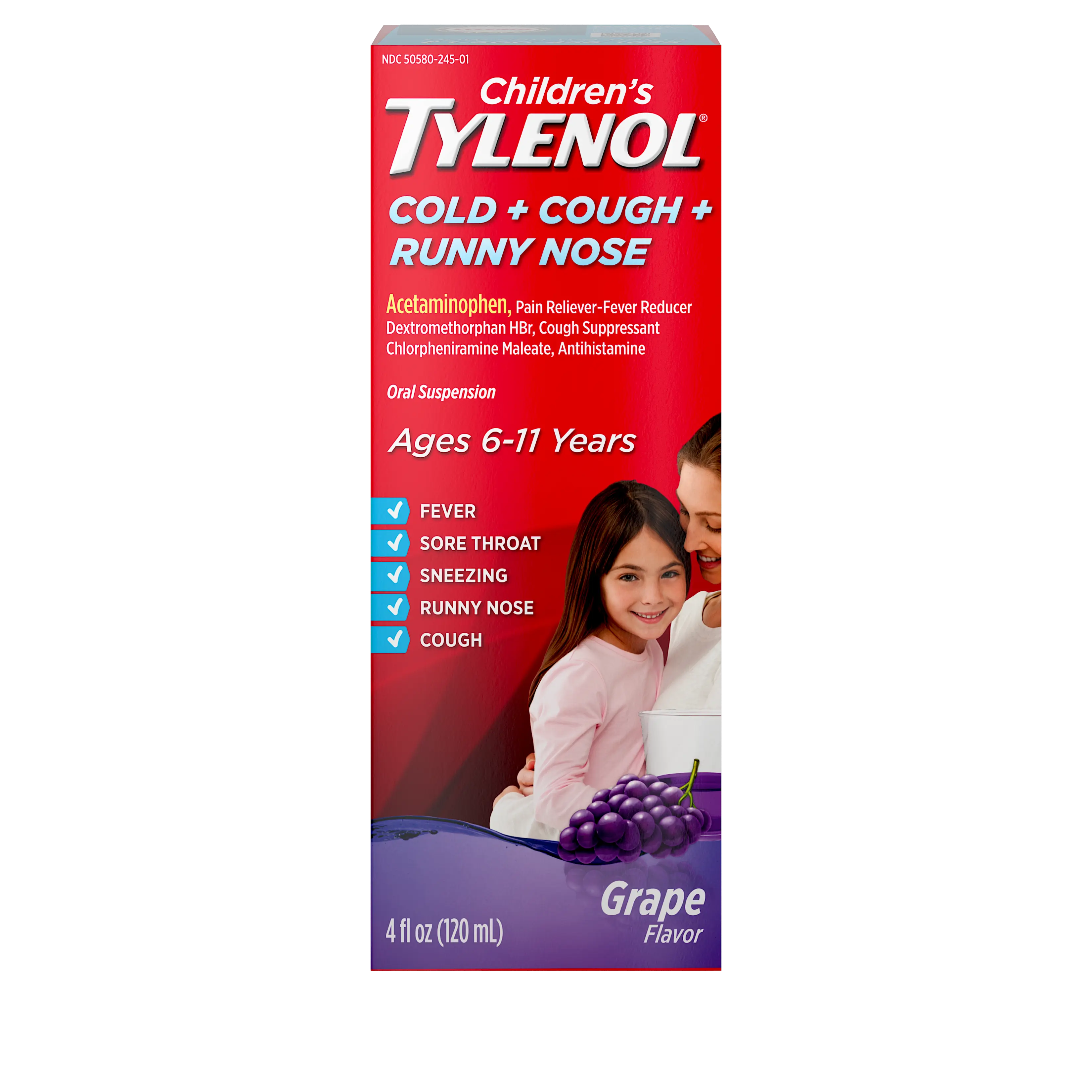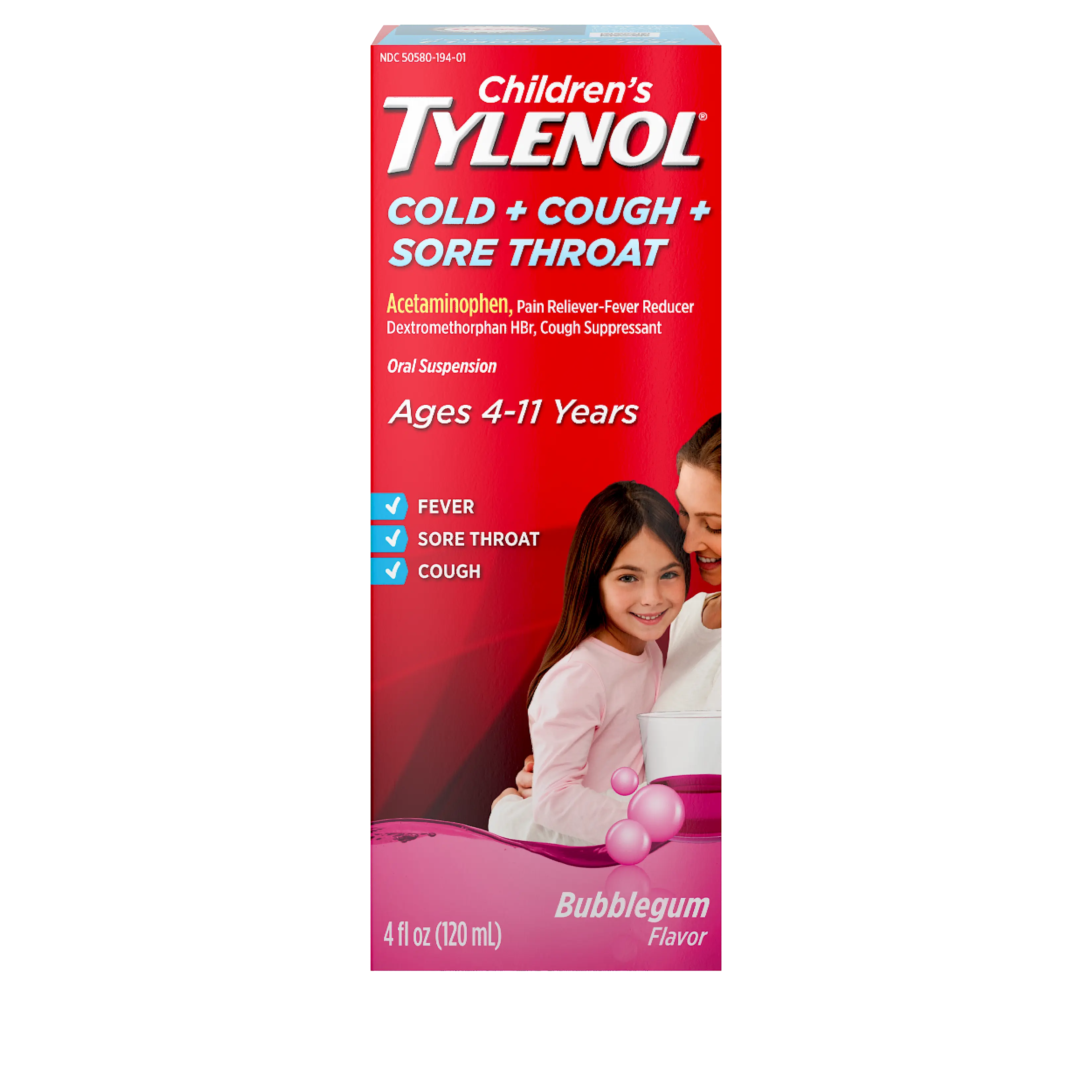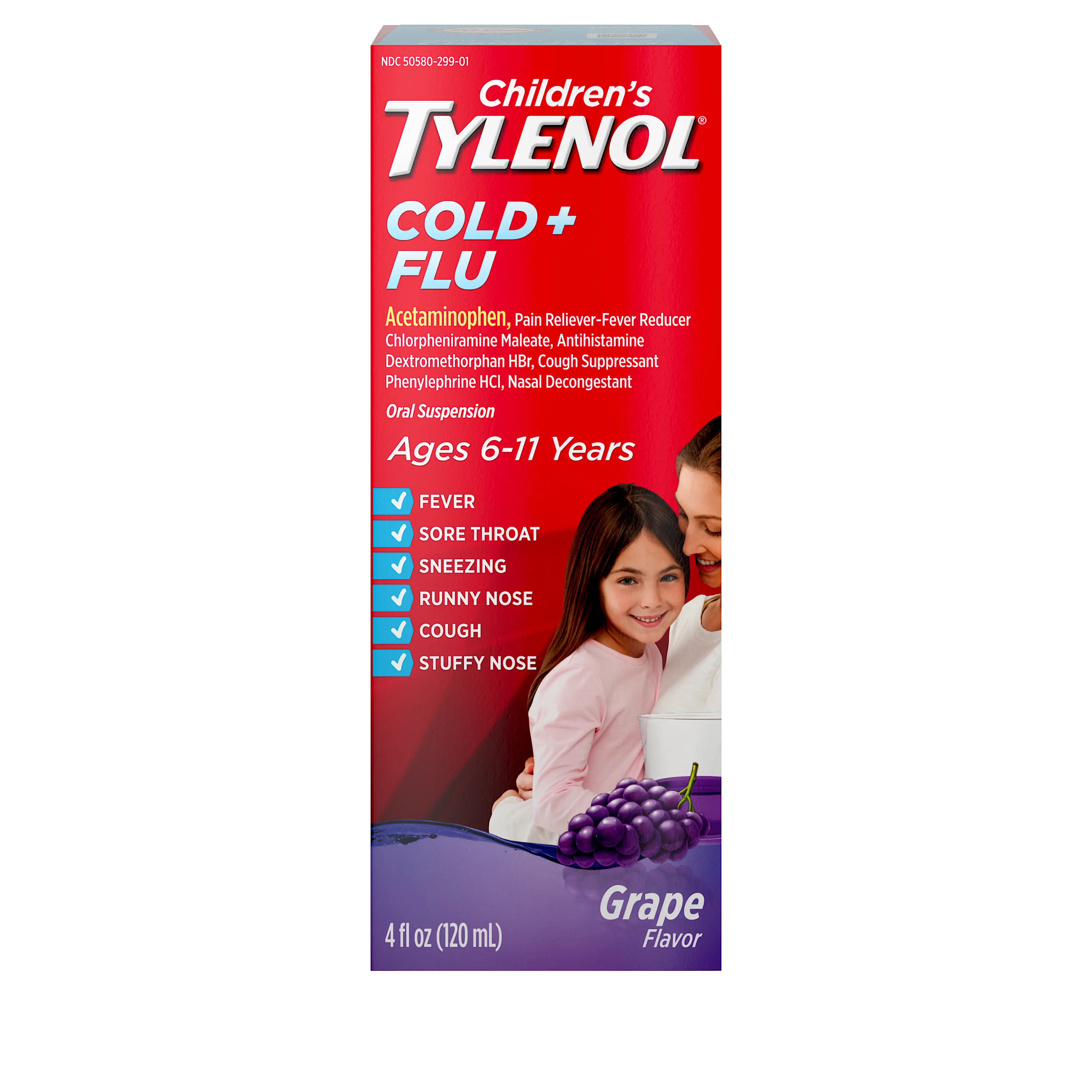As a parent, keeping your little ones well is always a top priority. Common illnesses like the cold, flu, and COVID-19 can be particularly challenging, especially when they spread quickly among children. But don’t worry, you’re not alone in this.
This page is here to provide you with strategies to consider to help prevent these illnesses and keep your family strong and healthy. Please talk to your doctor if you have any specific questions or concerns.
Prevention Strategies For COVID, Cold, and Flu in Children[1,2,3]
Wash Hands Frequently
How can you help prevent the common cold and other respiratory illnesses? One of the simplest and most effective ways is by washing hands frequently.
This is because respiratory viruses — like those responsible for the cold, flu, and COVID-19 — are easily transferable. If your child touches something with the virus and then touches their eyes, nose, or mouth, those viruses are more likely to get into their respiratory system. Handwashing with soap removes these germs from the equation.
Teach kids to wash their hands with soap and water for at least 20 seconds. This is especially important after being outdoors and in public places, before eating, and after using the bathroom. For times when soap and water are not available, use a hand sanitizer with at least 60 percent alcohol.
Disinfect Common Areas
Regularly disinfecting common areas in your home can significantly reduce the spread of germs and assist with cold, COVID, and flu prevention. Focus on high-touch surfaces like doorknobs, light switches, and countertops. Using a household disinfectant can help keep your environment clean and safe.
Wear Masks (When Necessary)
Wearing masks can be a crucial step in flu prevention and how to prevent COVID from spreading, especially in crowded or poorly ventilated areas.
Different types of masks provide varying levels of protection against viruses. Cloth masks generally offer the least amount of protection, while surgical or disposable masks provide better coverage. For even greater protection, consider those with filtering devices like KN95s and N95s.
Ensure the mask fits well, covering the nose and mouth completely, and that your child can wear it comfortably for extended periods.[4]
Keep Up To Date on Vaccinations
Keeping up with vaccinations is crucial for children as it helps build their immune system and provides protection against serious illnesses like COVID-19 and the flu. Regular vaccinations not only reduce the risk of infection but also minimize the severity of symptoms if they do occur, ensuring your child stays healthy and can continue their daily activities without interruption.[5] Talk to your doctor about whether TYLENOL® is right for your child post-vaccination.
Take Steps Toward Cleaner Air
Some germs spread through the air between people, especially in indoor, crowded spaces with poor ventilation. Virus particles are less likely to accumulate outdoors, making it a safer environment. Improving air quality by increasing airflow, cleaning the air, or gathering outdoors can significantly reduce the risk of exposure.
Things you can do:
Bring in fresh air: Open doors and windows to allow fresh outdoor air to circulate. Use exhaust fans to enhance ventilation.
Optimize HVAC systems: If your home has a central heating, ventilation, and air conditioning (HVAC) system with a filter, set the fan to "on" when you have visitors. Use pleated filters and change them every three months or as recommended by the manufacturer.
Use a HEPA air purifier or filter: Invest in a portable high-efficiency particulate air (HEPA) cleaner to purify the air in your home.
Move activities outdoors: Whenever possible, conduct activities outside where airflow is better and the risk of virus transmission is lower.[6]
Avoid Touching Eyes, Nose, and Mouth
Teach your children to avoid touching their face, particularly their eyes, nose, and mouth. These are the entry points for viruses, and keeping hands away can significantly lower the risk of infection.
Follow Proper Cough and Sneezing Etiquette
Encourage kids to cover their mouth and nose with a tissue when they cough or sneeze, and to dispose of the tissue immediately. If a tissue isn’t available, teach them to use the inside of their elbow. This simple act can help prevent the spread of germs.
Maintain a Healthy Diet to Boost Their Immune System
There’s no magic solution for what to take to prevent colds, but a healthy diet helps with a healthy immune system. A healthy diet can include lean proteins, sources of calcium, dairy and healthy fats like vegetable oils. Minimize eating foods that are processed, contain unhealthy fats and added sugar.[7]
Get Proper Sleep and Exercise
Adequate sleep and regular exercise are essential for a healthy immune system. Ensure your child gets the recommended amount of sleep for their age and encourage them to engage in physical activities they enjoy. Both sleep and exercise help the body stay strong and resilient.[8]
By following these simple strategies, you can help your children stay healthy and reduce the risk of common illnesses. Remember, a little care goes a long way.
How To Recognize Early COVID, Cold, and Flu Symptoms
Identifying early signs of COVID, flu, colds, and other illnesses can help parents and caregivers take prompt action to prevent the spread and provide timely care. Here are some common early symptoms to watch for and again, talk to your healthcare professional if you have any questions or concerns:
Early Signs of Common Cold[9]
Sore throat: Often one of the first signs is a tickle or soreness in the throat.
Runny nose: A runny or stuffy nose is a classic early symptom.
Stuffy nose: A stuffy nose is a classic early symptom
Sneezing: Irritated nasal passages tend to trigger sneezes.
Cough: A mild cough or hoarseness may develop.
Children’s cold symptoms are often mild for the first 1-3 days and typically peak and subside within 7-10 days.
Early Signs of COVID-19[10,11]
Fever: A fever is one of the most common early signs of COVID-19.
Cough: A dry or barking cough is often an early symptom.
Fatigue: Children may seem more tired or less active than usual.
Headache: Children can experience a headache.
Muscle pain: Muscle aches and pain can also be present with COVID-19.
For the most part, COVID in children causes mild symptoms — most commonly, fever and cough. Often, kids recover in one to two weeks with at-home care.
Early Flu Symptoms[12]
Fever: A high fever (103°F to 105°F) is often one of the first signs.
Cough that gets worse: A cough, which can be dry or productive, is typical.
Fatigue: Children may feel extremely tired and lack energy.
Body aches: Which may be severe.
Headache: Many cases of flu involve headaches.
Symptoms tend to feel intense in the beginning, but most children are ill with the flu for less than a week.
For a more comprehensive list, visit our Common Symptoms in Children for COVID, Colds, and the Flu page. And to dive into how to relieve your child’s cold or flu symptoms, check out our article here.
Help Relieve Your Child’s Cold and Flu Symptoms With Children’s TYLENOL®
When your child is feeling unwell due to a cold, flu, or even COVID-19, it's important to provide them with the right care to help them feel better.
Children’s TYLENOL® offers a range of products designed to alleviate common symptoms and make your little one more comfortable. Here are options to consider from the #1 doctor-recommended brand of pain reliever:
Children's TYLENOL® Dye Free Oral Suspension Helpful for relieving children's cold and flu symptoms of fever and pain, this product is free of dyes, parabens, and high fructose corn syrup.
Children’s TYLENOL® Cold + Cough + Runny Nose Oral Suspension This children's cold medicine comes in a tasty grape flavor to tackle multi-symptom colds by temporarily relieving runny noses and headaches, quieting coughs, and reducing fever.
Children’s TYLENOL® Cold + Cough + Sore Throat Oral Suspension Help relieve sore throats, coughs, headaches, and aches and pains with this easy-to-dose liquid oral suspension cold medicine.
Children’s TYLENOL® Cold + Flu Oral Suspension For fast relief for children's cold and flu symptoms (fever, sore throat, sneezing, runny nose, cough and stuffy nose), TYLENOL®'s oral suspension medicines come in easy-to-swallow liquids in kid-friendly flavors.
There’s no one-size-fits-all method for how to avoid getting sick, whether you’re a little one or all grown up. However, if you practice good hygiene, healthy habits, and take a few precautions, your whole family can stay a step ahead when it comes to flu, COVID, and cold prevention.




